Traveling to Tibet, India, Nepal, and Bhutan each is a great experience. But, visiting the four destinations during a single trip is a lifetime adventure. Still, you need to plan this voyage well and in detail before setting off.
India, Nepal, Tibet, and Bhutan share more than the Himalayan mountain range. They are highly spiritual, cultural, and friendly destinations, which happen to be cradles of some famous civilizations.
To enjoy these Asian destinations in full, you need to allocate a lot of time to prepare and choose the right route. Now, let’s see what your most important considerations should be.
1. Choose the Best Season for Traveling
Every season brings something unique to our listed destinations. Still, for a combined visit to Nepal, Tibet, Bhutan, and India, you should prioritize spring and autumn. Before proceeding further, note that summer tends to begin earlier and end later in India than in other countries.
Shoulder seasons of autumn and spring feature the most favorable conditions for traveling. During these periods, our destinations feature cool to comfortable temperatures and low rainfall, generally speaking. Plus, you would admire the abundant greenery or warm autumn colors in the countryside. In higher regions, snow, covering imposing peaks, will still be waiting for you.
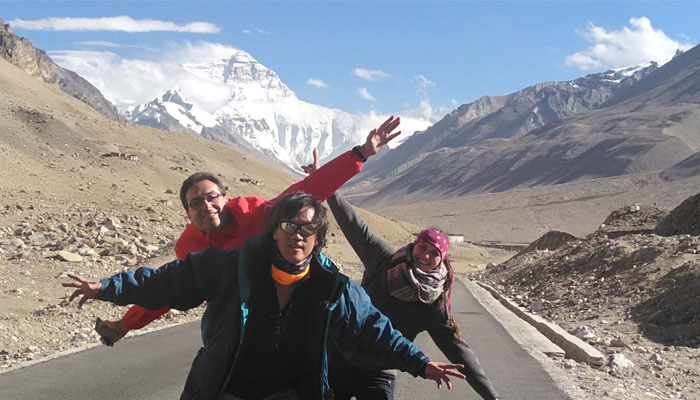 Our client visit Tibet Everest Base Camp in spring
Our client visit Tibet Everest Base Camp in springDuring a trip to Bhutan, Nepal, Tibet, and India in winter, you have to consider the possibility of blocked passages in the mountains. In the countryside, temperatures tend to plummet way below the freezing point. Moreover, certain accommodation providers, such as those around Mount Everest, may close for winter.
In summer, monsoon season is in full swing throughout the Himalayan nations. For visiting these destinations during this season, you would need rain gear more than anything else. Plus, clouds are likely to hide Mt. Everest and other peaks from view, preventing you from taking some of the most stunning photos ever.
2. Contact a Professional Travel Agency
It goes without speaking that choosing the right season for traveling to Bhutan, Tibet, Nepal, and India is essential. However, getting in touch with a reputable travel agency, such as Tibettour.org, is equally important.
While you can organize an independent trip to a majority of destinations worldwide, that isn't the case for a joint tour of the four Himalayan nations. To make this trip come true, you will need the assistance of a tour operator for organizational and practical reasons.
 Choose our professional travel tibet agency operator
Choose our professional travel tibet agency operatorYou already know that the Himalayan mountain range is the highest in the world. Hence, the usual rules of traveling don't apply here. For starters, the air gets thinner, and you become more vulnerable to sunburns with the elevation increase. And, this could lead to various consequences if you aren't informed or prepared well.
Professional travel agency steps in right there, to assist in preparing the tour of Tibet, India, Bhutan, and Nepal for you based on your requirements and its experience. Tibettour.org, for example, can apply for necessary permits and documents (like Tibet Travel Permit) on your behalf and ensure that you have a hassle-free trip.
How to Choose a Tour Operator?
Choosing a customer-oriented travel agency may need research on your part. The first thing you should consider is how long the tour operator is on the market. The longer in business it is, the higher the possibility for high performance is.
Furthermore, pay attention to the cost of a service. If the price deviates a lot from similar services, it is a signal that something may be out of place. Finally, refer to the experiences of travelers that hired the agent you consider on the web.
3. Obtain the Required Travel Documents
Before the beginning of the tour of Nepal, Tibet, India, and Bhutan, you need to secure necessary documents. Travel agent you choose can help you obtain some of them, but others, such as visas, you need to apply for yourself. Only for a trip to Bhutan, apply via a tour agent you hire.
Note that Tibet is an autonomous region of China, and most tourists need to apply for the China Visa to visit the world's highest plateau. Furthermore, the republics of India and Nepal have different visa approval policies.
Next, you may need special permits to visit certain regions of Tibet. A well-reputed tour operator can help you with that.
Tibet Travel Documents
Obtaining the China Visa is the basis of applying for other documents for visiting the autonomous region of Tibet. Once you get the visa, your chosen local tour operator can apply for the Tibet Travel Permit (TTB) for you.
If you enter Tibet from Nepal, hire the agent located in Kathmandu to put you on the list of travelers applying for the China Group Visa.
If you plan to visit some specific places in the autonomous region, such as Mount Everest or Lake Manasarovar, you need to have the Aliens' Travel Permit and Military Permit. You also apply for those via the travel agent you choose.
Bhutan Visa
The application procedure for a visit to the Buddhist Kingdom of Bhutan is somewhat different. In this case, you need to apply via an authorized local or foreign travel agency.
First, you have to arrange the Bhutan tour details, including the exact dates of arrival and departure. Next, you pay related tour and visa costs. Following the official approval, you receive a letter that you present upon arrival in Bhutan to get the visa.
Papers for Traveling Nepal and India
Acquiring travel documents for visiting Nepal is simple. You can either apply via an embassy or at the border while entering the republic. Make sure to have US dollars to pay for visa costs. For most travelers, you can also easily get an e-Visa to enter India. It is valid for 60 days.
Note that you are likely to enter this country multiple times during your trip to Tibet, India, Bhutan, and Nepal. Therefore, you need to secure a timed multi-entry visa, which could be valid from 15 to 90 days. The price of these varies from around 50 to 100 US$, depending on the type of visa.
4. Decide the Travel Route for Your Tour
You can start the tour of Tibet, Nepal, India, and Bhutan in any destination, of course. However, consider setting off on the Himalayan adventure from India or Tibet rather than from Bhutan or Nepal for organizational and practical purposes.
Tibet or India as the Starting Point
Planning the starting point of your Himalayan trip will have a considerable impact on the overall experience. In this regard, you should consider altitude difference before anything else.
Choosing Tibet as the first destination may look strange, given that the autonomous province features the highest altitude of the four. Still, your tour operator can deliver the TTP to you only when you arrive in China, not before. This leaves you plentiful options to choose a city or a region at the right altitude to acclimatize.
 It is a wise choice to start your trip from India.
It is a wise choice to start your trip from India.On the other hand, India features the lowest altitude of the four destinations. Therefore, you could start a tour there and gradually increase the elevation to accustom yourself.
So, if you choose to visit Bhutan or Nepal first, you are likely to have issues with accommodating to high elevation. Also, the border between Bhutan and Tibet (China) is closed. And that means that you are likely to enter Nepal more than twice, which takes a lot of time, tends to be exhausting, and costs more.
Plus, only a handful of airports maintains traffic to Paro, the main airport in Bhutan. Besides from Kathmandu Airport, most flights depart from India. So, why go to the Buddhist Kingdom first and return to visit India later?
Planning How Many Days to Spend on the Trip
If you can't allocate more, you can do a quick tour of Bhutan, India, Tibet, and Nepal in 16 days. For a meaningful voyage, this is the absolute minimum.
However, note that this way of touring the Himalayan nations involves traveling by airplane, which means abrupt changes in elevation. So, every additional day would make a big difference.
If you wish to visit other points of interest besides the capitals of India, Tibet, Nepal, and Bhutan, and a few other places, you will need more time. In this regard, allocating any number of days up to a month would be great. Even more than that wouldn't be too long.
Conclusion
As you can see, there are many parameters and factors you need to consider when planning a trip to Tibet, Bhutan, India, and Nepal. Also, different seasonal variables, such as festivals and holidays, may affect the course of your Himalayan journey.
Given the circumstances, the best course of action and guarantee for a premium experience would be contacting the professional tour operator. Tibettour.org is on the market long, and the number of our satisfied clients is on the constant rise.
So, get in touch with us and let our expert team help you prepare a trip you will remember forever. When planning a perfect trip, we take into account your wishes, needs, and everything else. Hence, reach out soon because a perfect Himalayan trip cannot wait.





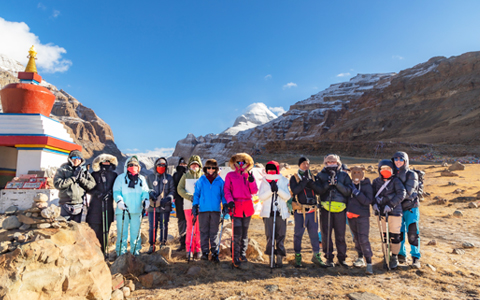

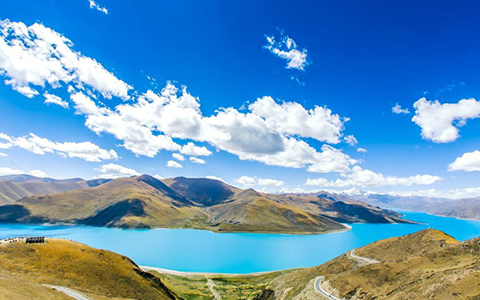
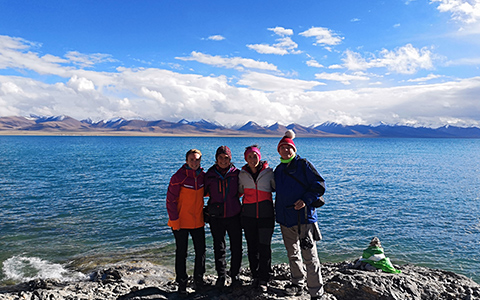
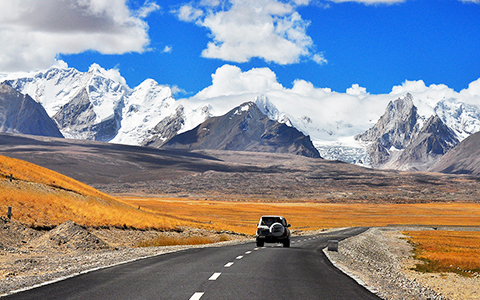



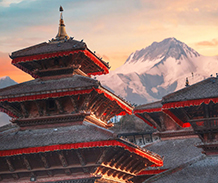
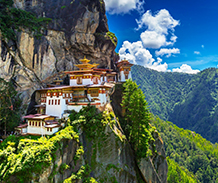




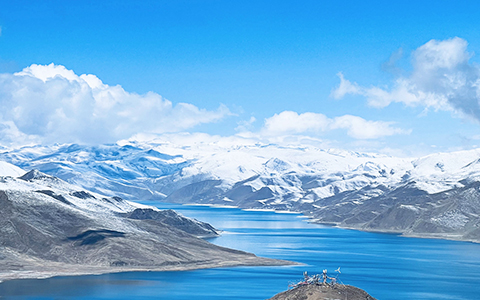
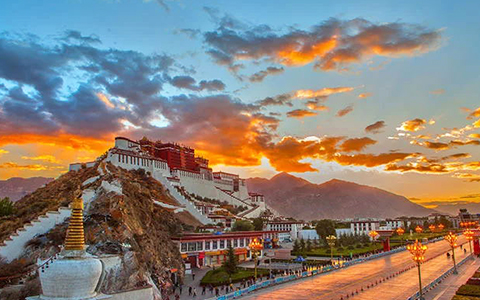




 Our client visit Tibet Everest Base Camp in spring
Our client visit Tibet Everest Base Camp in spring Choose our professional travel tibet agency operator
Choose our professional travel tibet agency operator It is a wise choice to start your trip from India.
It is a wise choice to start your trip from India.
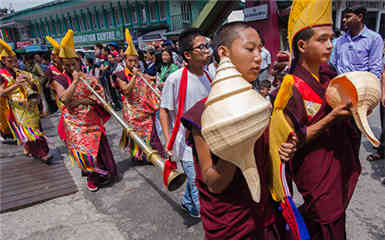
385.jpg)
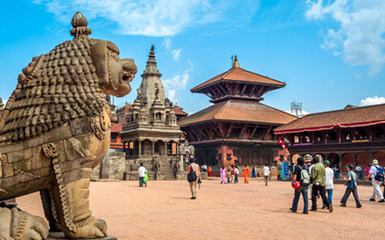



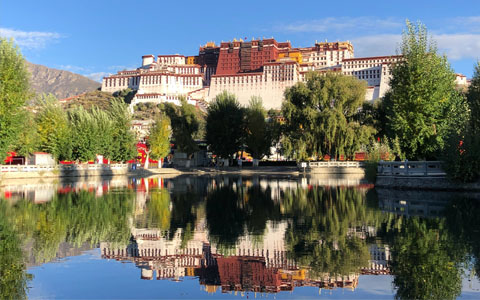


Ask a Quick Question